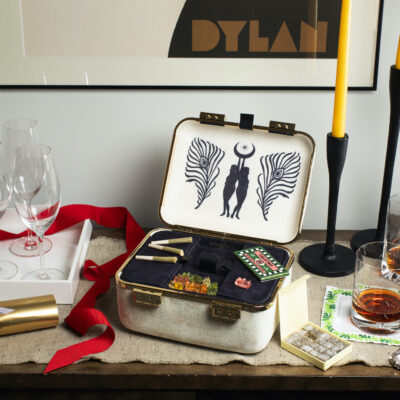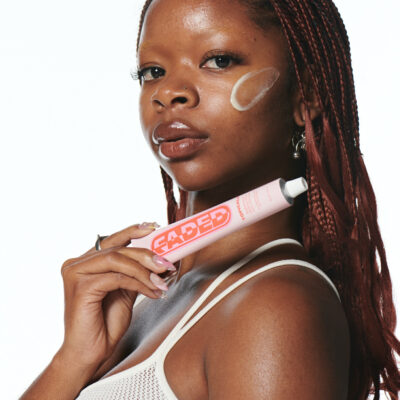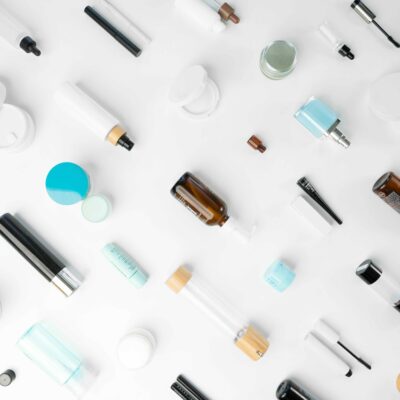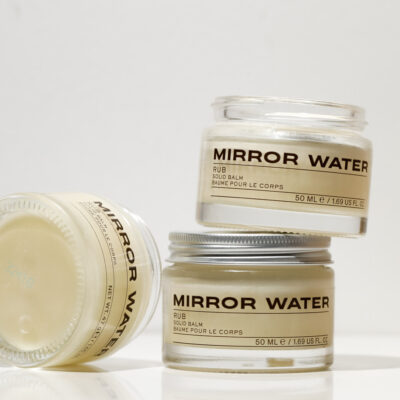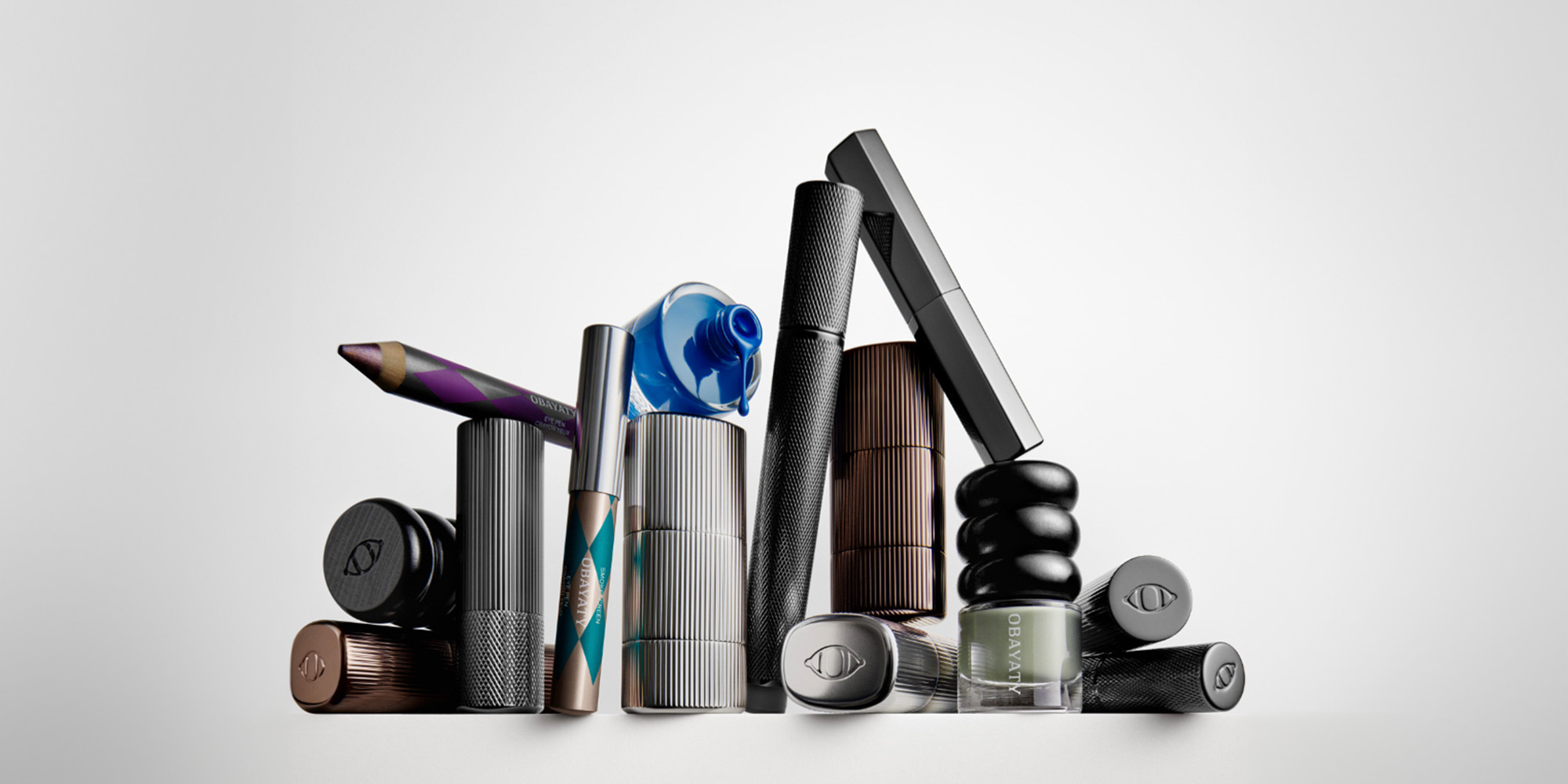
Why Obayaty Is Confident It Will Succeed In A Men’s Makeup Category That’s Seen Countless Stumbles
Obayaty co-founders Pontus Frankenstein, creative director of Frankenstein Studio, Max Martin, a songwriter who’s penned hits for the likes of Celine Dion, Backstreet Boys, Taylor Swift, Ariana Grande, Usher, Coldplay and the Weeknd, longtime marketing executive Lajjo Strand, and investor and entrepreneur Anna Ryott seek to do something at their men’s cosmetics brand that’s never been done before: make it a big success.
Neither corporate (Boy de Chanel) or startup attempts (War Paint, Stryx) at men’s cosmetics have been able to reach the revenues and renown that female-geared cosmetics brands have. Men’s cosmetics brands have generally been through the same cycle: launch, splashy media coverage and fade into relative obscurity.
At first glance, Obayaty’s approach is different from its peers. Unlike Boy de Chanel, Stryx and War Paint, the brand, which launched late last year, eschews opaque black packaging for fluted, pewter components that call to mind Tom Ford’s striated perfume bottles and an eco-friendly take on the satisfying click of a high-end lipstick (achieved without magnets, which don’t align with Obayaty’s sustainable mission).
It doesn’t overemphasize “manly” branding and unapologetically offers products with mass appeal (a mattifying skin perfecter, tinted eye cream, clear lip balm) in tandem with ones that are more adventurous for guys (bronzer and highlighter sticks, nail polish and candy-colored eye pencils).
Brands keep trying men’s cosmetics because the market potential is huge. If even some men up their makeup game, they could realize enormous gains. Market research firm Euromonitor estimates the men’s global grooming market is advancing at a 5.6% compound annual growth rate to go from $53.8 billion in 2022 sales to $70.7 billion in 2027 sales. The shave and fragrance categories currently make up a combined 60% of that amount, with toiletries, including skincare and cosmetics, among other smaller categories, contributing a combined 40%.
But are global male beauty consumers finally ready to embrace a beauty brand directed at them? Research from the firms Mintel and The Benchmarking Company suggests that, yeah, they just might be. Nearly half of men between the ages of 18 and 24 years old report a willingness to try complexion-correcting makeup such as foundation or concealer, and 38% of men have purchased a luxury personal care product to treat themselves. Of course, the only real way to know is to see how consumers react to a brand like Obayaty in the year 2024.
Over a Zoom session with Stockholm-based Frankenstein, who appeared with a shaggy surfer’s lob, a gray sweater that looks both expensive and unassuming at once, and an effortlessly cool sprinkling of silver rings, Beauty Independent discussed Obayaty’s funding, its pop-up at Selfridges, the ease of use of its products and the energy shift they aspire to produce.
How did a songwriter, entrepreneur and investor, marketing director and creative director set out to create a male beauty brand?
The idea was conceived in Max Martin’s studio many years ago, but it wasn’t until we started working with it two years ago that we really developed it into a brand. It’s super inspired by the creative community here in Europe and abroad. We have such good relationships with that community. Some of them chose to invest in our company, so it’s not the traditional VC-funded company, although we have substantial funding.
Did you secure institutional funding for the brand launch or was it friends and family?
Initially it was bootstrapped, but we have had substantial investment in our company from a diverse group of investors. Due to our network, a lot of them are from the creative community, but we also secured funding from “dark green” funds [or European funds that explicitly follow a sustainable investing strategy] like CC.VC, a climate-focused venture fund. Dark green funds have really hardcore ethics in terms of sustainability. They check everything time and time again.
How has the reception been to the brand since your launch?
We launched two and a half months ago. The response so far has been great. We have had several people writing in and saying, “For the first time in our life somebody told me that I look fresh,” “I got a compliment,” or “Somebody told me I look good.” And that’s super rewarding.

There’s a quote on your website that says all formulas are consciously created to address male concerns. How did you tackle this?
There are not that many products that are uniquely developed for men. Of course, it’s subjective, but there are recurring things that men tend to deal with. Our complexion is coarser. We have larger pores. We tend to have higher sebum production that makes our forehead and nose look shiny.
I shave every day, which means that I have a sharp piece of metal that irritates my skin every day and that causes problems. We took all of that into consideration when we developed the formulas.
Who’s your target customer?
Our target customer is a fairly curious guy living in what we would call an urban environment somewhere around the world. We don’t look at markets in a traditional sense. It’s a psychographic. We look into cities or communities where we can sense a strong interest to explore identity, to explore self-expression, to explore style.
We can already tell from the data we have so far that could be a lawyer in his fifties in Stockholm, one of the club kids in Berlin and probably somebody else in Chicago. Awareness both in fashion and in beauty from a male customer is increasing, and we believe that the first ones that will try out our products are what we call the curious ones.
A handful of brands have tried men’s beauty products in the past and struggled. How’s Obayaty different from brands that have come before it?
Me and the rest of the founders do not come from the beauty industry. The benefit of approaching beauty from a slightly outside perspective is actually that we approached it in a slightly different way. It’s not about only creating a product that takes into consideration male concerns, it’s tapping into behavior.
Behavior is the foundation for the products, how we developed the formulas, how we put them into the context that is packaging, and how the product is designed to be used. That’s part of why we ended up with several stick formats. We explored it with testers and got really good feedback. The people who test it say our products have an intuitive design. It’s easy to use. That is what diversifies us from a lot of other brands.

Your products don’t require brushes, shaking or stirring to work.
It’s super important that our products don’t require that, but what we’re trying to do is open up the doors to the beauty world for a lot of men. It’s addictive when you start using something and you see the result. All our products have an instant result. When you see that result, you become satisfied, and if you’re a curious person, you will want to explore the next level or the next step, which would require additional tools and additional products.
How do you think about toeing the line between more broadly appealing products like your complexion-perfecting products and more adventurous products?
Our audience can look at our brand and think, “This is for me, this is not for me,” or “This might be for me later on.” I can’t mention his name, but I met one of your biggest artists in the U.S. I thought he’d always worn makeup, but he told me he first tried black eyeliner last year, took it home and started experimenting with it. From then on, there was no turning back for him.
I think we will find there are different doors into our world. Some will enter through basic products, some will enter from more progressive or creative tools.
Out of the products that you’ve sold since your launch, which is your bestseller, and why do you think that is?
The bestseller is our daily moisturizing primer called the Skin Perfector. It mattifies, it hydrates and slightly blurs the complexion, but it’s still very subtle. You can think of it as a sophisticated day cream, but with an instant result.
I think it had immediate recognition because it’s a product that doesn’t require any skills. Somebody reached out and said, “I love this product because everyone noticed that something happened, but nobody knows what.” It appeals to a large portion of our audience.

What’s your price range, and how did you land on that?
The products range from $27 for the lip balm refills to $93 for the Skin Perfector Radiant Primer. We definitely aspire to a premium position or a high-end position, but because of our sustainability ethics, which are super important to us, a lot of the products have one price when you purchase them for the first time and then a lesser one when you purchase the refill. So, if you buy the Skin Perfector, it would be a little less than $100, but, when you buy the refill, it would be around $50.
What’s your current distribution model?
We have a DTC website, and we work with both specialty stores and lifestyle stores. Many of our retail partners in Europe actually sold out within a couple of weeks. In Warsaw, Poland, for instance, people quickly started picking up the product and doing YouTube videos, promoting it on social media. We had a cultural impact immediately over there.
We’re in a store in Berlin called Voo Store. What’s interesting about them is they don’t carry beauty products. They have some fragrances, etc., but they’re not beauty specialists. People go into that store and look for Prada, Maison Margiela and Ludovic de Saint Sernin, and they see our products in that context. It’s really interesting to see that our sell-through is really strong in that store.
We are opening up a pop-up store in Selfridges in London. That’s going to be super interesting. We are going to be on the second floor, the men’s apparel floor, rather than the beauty section. We do know that men avoid the main entrance at a department store.
We have a wish list of stores around the world that inspire us, and most of them are really keen on working together. I think that’s the foundation for a brand like us. We are not one of the big brands. We cannot buy ourselves into the store. We can’t buy ourselves into a premium position. The people that inspired us to do this have to be inspired by us, and if they are, then we can collaborate and work together.
How has co-founder Max Martin connected the brand to the music industry or changed how it has come to life?
So many of us look to artists for inspiration. They push the boundaries, and that’s what inspires most of us. It’s also inspiring aesthetically. It’s not about somebody walking in with the most expensive suit or whatever it is. It’s when someone enters the room and you’re like, “What just happened? Did the energy shift?”
It wouldn’t be OK for me to say that our products will fix that, but I do believe that coming to terms with who you are is a great step forward to reach that level of confidence or whatever it is. Sorry, that was a long answer. Max’s curiosity has attracted such a diverse group of people in his world, in his studio, and that’s super inspiring to be part of.

